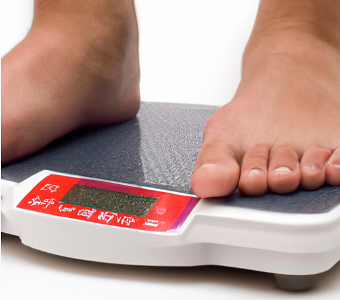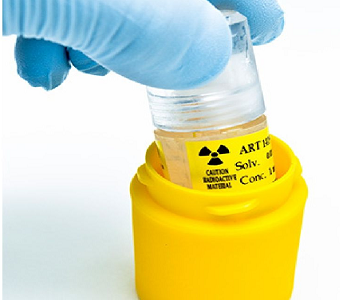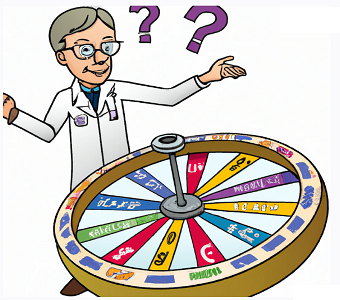Bluebird Bio (BLUE) surprised everyone on Monday evening, exceeding expectations for early data from the LentiGlobin drug candidate presented at the annual ASH meeting in San Francisco. BLUE climbed 70% in the Tuesday session.
LentiGlobin is a potential treatment – one-time cure, in fact – for the rare genetic disorder, β-Thalassemia Major. And with the impressive efficacy presented at ASH, analysts and investors are getting incrementally more comfortable with LentiGlobin’s potential in Sickle Cell Disease, a much larger (read, lucrative) indication for which the company should have data early in 2015
We suggested buying BLUE in late October at just over $35, and outlined what we were hoping for at ASH at that time: Monday’s data were 3 for 3 on Mr. Fink’s criteria. Here’s our short-list from October:
•No Adverse Events relating to drug product. [Check: 6 of 6]
•Stable ßA-T87Q expression at levels enabling transfusion independence (total Hb: 9-18 [g/dl]) [Check: 4 of 4]
•Insertional analysis of the ßA-T87Q transgene demonstrating polyclonal integration, with no clonal dominance. [Check: 3 of 3]
Rapid transfusion independence is a reality. The first four beta-thalassemia patients treated with LentiGlobin, who had at least 3 months of followup, are all transfusion-independent and producing robust levels of beta-T87Q-globin. All four are also producing normal or near-normal levels of hemoglobin (Hb). The first two patients treated in the Hgb-205 Study are now 12- and 9-months transfusion independent, and even the one, more difficult B0/B0-genotype patient in the Northstar Study, at 3 months post-treatment, is part of this transfusion-independent group.
The three remaining patients treated are only about a month out from first treatment. Based on current precedence, we would be looking for normal Hb levels, and possibly transfusion independence, in early 2015. Additionally, the single Sickle Cell Disease patient treated in Northstar is only one month post-infusion.
Safety has not been an issue to date in either study. LentiGlobin has been well tolerated, with no therapy-related Grade 3 or greater adverse events.
These data are truly a homerun, as we had actually been trying to temper investor expectations for rapid-transfusion independence ahead of the event. The joke’s on us, but it’s the best kind of jokes.
On Wednesday, bluebird hosted a concerence call with investors to discuss the data from ASH. There were no major takeaways outside of the presented results, but the company is guiding for enrollment in both HGB-204 and -205 to be completed in 2015, and HGB-206 testing LentiGlobin excxlusively in Sickle Cell Disease, has begun enrolling. Additionally, investors can expect updates on the Celgene-partnered (CELG) CAR-T program in 2015 as bluebird prepares to enter the clinic. This is noteworthy in light of Juno Therapeutics’ (JUNO) planned IPO at a $1.5 billion valuation, as well as Bellicum (BLCM). Bluebird is slightly behind Juno in development, but has an exceptional partner in Celgene.
Investment community gains confidence in beta-thal and the possibility of a platform, gene therapy technology. Two more patients achieving transfusion independence, which is the greatest clinical outcome for B-thal, is simple de-risking (incremental) and further proof of concept that LentiGlobin does what it’s intended to. Investors are willing to attribute a higher chance of success to the asset, and a better shot at the large, b-thal market opportunity. And, LentiGlobin now has its first proxy for potential pricing – uniQure’s (QURE) gene therapy cure for lipoprotein lipase deficiency, Glybera, was just priced at $1.4 million in Germany.
Bluebird estimates that there are 15,000 beta-thal patients between the EU and U.S. If LentiGlobin taps into just 35% of this market, and prices at a discount to Glybera of around $1 million, LentiGlobin could be a $5 billion product at peak. More conservatively, at $500K and just 20% of the b-thal market, Lentiglobin could still be a $1.5 billion product at peak.
Meanwhile, Sickle Cell Disease affects some 100,000 Americans, and as many as 25 million people globally. If the apparent curative effect of Lentiglobin in B-Thal has the same carry-through to SCD, the market opportunity is tremendous. Truly, this is why investors are excited about BLUE. While we plan a deep-dive article in the next month on the rationale behind Lentiglobin in SCD, this interview with Dr. Cavazza is a great primer.
One or more of PropThink’s contributors are long BLUE or CELG.




